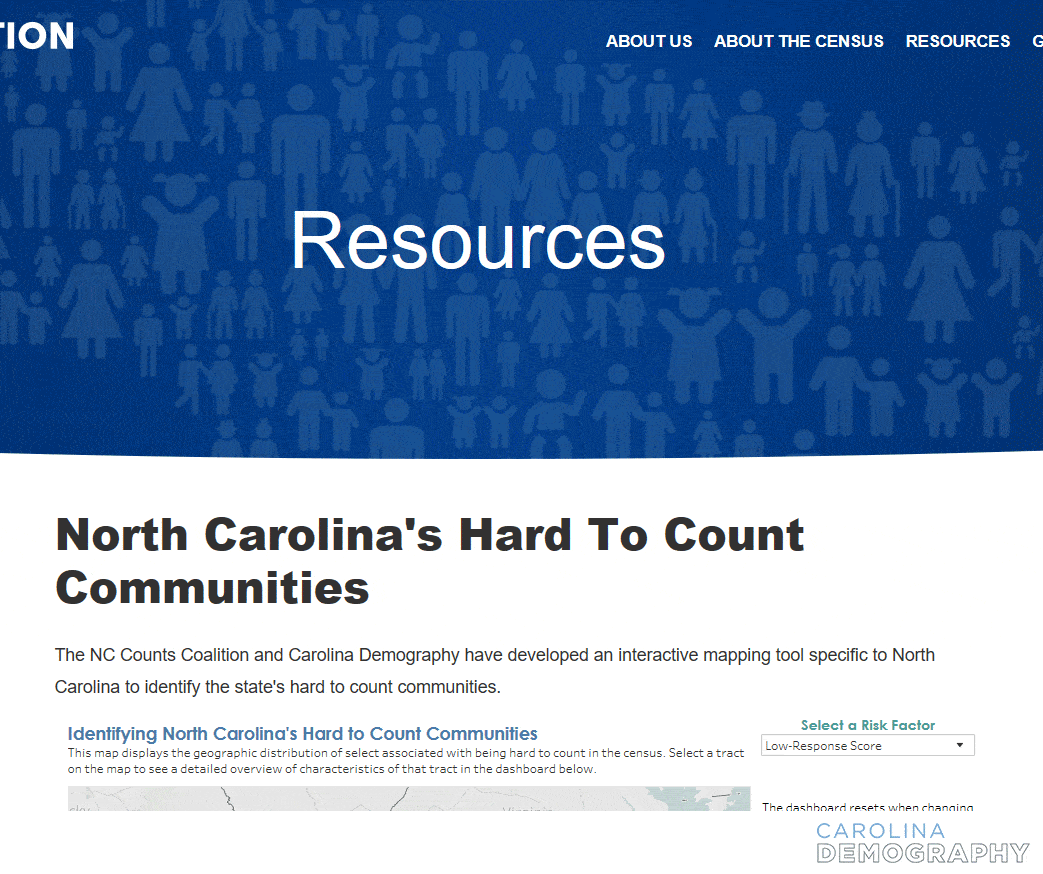
When we talk about the importance of the U.S. census, we often talk about power and money. The decennial census shapes how billions of dollars in federal funding are distributed, how congressional seats are apportioned, and how states and cities plan for future residents.
But the census is more than just that. It is the backbone of virtually every data product researchers, governments, and businesses use to understand who we are, how we’ve changed, and what this might mean for the future. It’s also the most democratic and inclusive activity we do as a country. This once-a-decade count is the only source of basic demographic data on all individuals living in the United States.
As a demographer, I use census data to create everything from population and housing projections to in-depth research on economic and social trends that affect North Carolina’s residents. And though the Supreme Court recently sent the proposed citizenship question on the 2020 census back to the lower courts, the discussion of the question has me concerned about the possible impact on response rates.
The risk of an undercount
One big challenge for 2020 is declining response rates to the census and other surveys. Lower response rates increase the risk of an undercount, which could skew the census data that’s used to ensure fair political representation and support community planning. We recently worked with the NC Counts Coalition to create a map that identifies communities across North Carolina that are most at-risk of being undercounted in the 2020 census.

There’s a lot at stake for our state. Stacey Carless, the Executive Director of the NC Counts Coalition, notes that the census “directly affects the allocation of $16.3 billion annually in federal resources to North Carolina.” Additionally, she notes, with an accurate 2020 census count, North Carolina is projected to gain a seat in the House of Representatives, increasing its representation from 13 to 14 representatives.
But communities across the state only have one shot each decade to count all of their residents. If a community is undercounted, they will have lower quality data and receive less than their fair share of political representation and funding for the next decade.
Certain populations have historically been undercounted in the census, due to a variety of factors. Some groups—like college students or people who own two homes—are more likely to be counted more than once, while other groups—like young children or people who have recently moved—are less likely to be counted at all.
Why might people be undercounted
There are four main reasons why a population might be hard to count:
- They might be hard to locate, like people who live off-the-grid or who don’t wish to be found.
- They might be hard to contact, like people who live in gated communities.
- They might be hard to interview, meaning they might have low literacy or struggle with English.
- They might be hard to persuade, meaning they are suspicious of the government or don’t see a benefit to participating in the census.
Hard-to-count communities include children under age 6, renters, and American Indian, Hispanic, and Black households. Changes to the 2020 census – such as the shift to primarily online data collection and the proposal to add a citizenship question may create new risks of undercount among additional groups.
Where are North Carolina’s hard-to-count communities?
There are hard-to-count communities spread across North Carolina in both urban and rural areas.
Many of our hardest-to-count communities are military communities. Cumberland County, home of Fort Bragg, and Onslow County, where Camp Lejeune is located, have multiple tracts at high risk of being undercounted in the 2020 census.
But based on low-response rates — the predicted share of households who will not self-respond to the 2020 census — Robeson County is the hardest-to-count county in North Carolina. Seventy-two percent of Robeson residents live in a census tract that is predicted to be among the hardest to count in 2020.
We’ve compiled more information on who gets counted in the 2020 census. And you can use the census tract street locator tool from the U.S. Census Bureau to find your census tract and the hard-to-count map to see communities across the state that have characteristics that are associated with being hard to count.
Weekly Insight Civic Engagement

